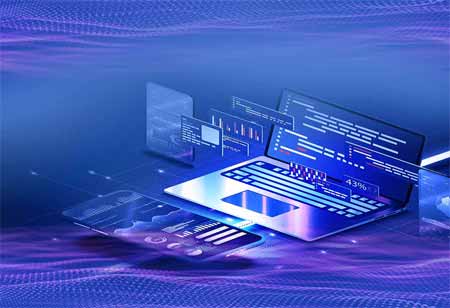THANK YOU FOR SUBSCRIBING
Exploring Cognitive Computing
Cognitive computing involves using computerized models to stimulate the thought process in human beings, especially in complex situations where there may not be a straightforward answer or could be ambiguous and uncertain.

By
Apac CIOOutlook | Friday, December 23, 2022
Stay ahead of the industry with exclusive feature stories on the top companies, expert insights and the latest news delivered straight to your inbox. Subscribe today.
Cognitive computing involves using computerized models to stimulate the thought process in human beings, especially in complex situations where there may not be a straightforward answer or could be ambiguous and uncertain.
FREMONT, CA: In complex circumstances where there might not be a clear-cut solution or is confusing and uncertain, cognitive computing includes employing computational models to encourage human intellect. In general, computers perform calculations more quickly than people. They still struggle with some skills, such as comprehending spoken language or identifying particular things in pictures. Many artificial systems are unable to fully comprehend human ideas. It can generate brilliant thought and reasoning from commonplace causes and provide a convincing response.
To merge several technologies with AI and lay out a plan for obtaining this advanced degree of reasoning, cognitive computing was developed. Real-time computing, natural language queries, and machine learning capabilities are some of the technologies that are used when developing cognitive computing systems. Both organised and unstructured data can be analysed by these computing systems in massive quantities.
Key Features of Cognitive Computing
These are the essential aspects that cognitive systems employ to resemble the functioning of the human brain and develop highly developed reasoning and thinking skills.
High Integration
As the systems learn from new data and interactions as well as historical data, they conclude on a matter based on the modules integrated into the system.
Probabilistic
Based on the context being analysed, the cognitive system identifies the pertinent patterns. Following that, it creates, assesses, and makes predictions about many hypotheses depending on the available data. It then delivers the definitive response based on deep inference and learning.
Adaptive Learning and Dynamism
The cognitive system adapts to new information as it is received. Every new piece of data is also analysed to find fresh patterns, settings, and actions. In this manner, it is possible to gain a thorough grasp of the numerous factors that are at play in every given event.
Adept Information
A cognitive computing system can synthesize ideas from patterns derived from big data from various sources.
Cognitive computing could help companies that are expanding their online presence offer the products and services that clients want. Integrated cognitive analysis has previously been used on several websites. The consumer's preferences for products can be determined by the system, which tracks customer interactions with the website. It uses information analysis to suggest goods it thinks the client might find interesting, simplifying the job of marketing assistants.
Cognitive computing has more potential as it can be used for price optimization, demand forecasting, and web design. In demand optimization, the tool can be used to determine the best price for a good. It can also be used to predict potential demand for a period and adjust the supply chain accordingly. Retailers can also use it in-store to determine the price for different items and the location of specific items on the shelves.





